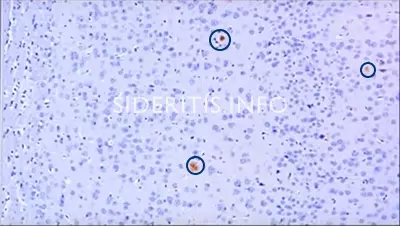2. What is Alzheimer’s
All parts
- 1. What is a Dementia?
- 2. Types of Dementia, what is Alzheimer’s ( You are here )
- 3. Risk Factors Alzheimer’s
- 4. How can we treat Alzheimer’s
- 5. Medical Plants and Alzheimer’s
- 6. Early Treatment and Patient Replies
- 7. Treatment successes with plant extracts
Dementia is divided into common dementia and rare dementia. Alzheimer’s dementia belongs to the group of common forms of dementia, accounting for around 2/3rds of dementia diseases. Common dementias also include Lewy body dementia, (Parkinson’s dementia), and vascular dementia, (vascular dementia, calcification).
The common dementias are overlapping, Alzheimer’s dementia and vascular dementia are often found together. Rare forms of dementia include frontotemporal dementia, (damage to the nerve cells in the forehead and temples) and prion disease (BSE). Also, not to be underestimated is dementia as a result of brain trauma, which can be triggered by some sports, such as boxing or American football.
Inflammation in the brain, such as that caused by inhaling carbon monoxide toxins, can also lead to dementia. Another cause of dementia is brain tumors.
Where did the term "Alzheimer's" come from?
Alzheimer’s dementia is named after Alois Alzheimer, who was visited by his patient Auguste Deter in November 1901. Among other things, she suffered from pathological jealousy symptoms. A correct diagnosis could not be made for the patient.
She was given alcohol to calm her down and poisons. She also received cold and warm baths, (balneology). After Auguste Deter’s death in 1906, the brain was made available to Prof. Alzheimer and he was able to study it.
He diagnosed cerebral atrophy, (shrinking of the brain), arteriosclerosis (hardening of the arteries), pneumonia, (inflammation of the lungs), and nephritis, (inflammation of the kidneys). Pneumonia and nephritis are the leading causes of death in Alzheimer’s patients.
What is seen in the brain in Alzheimer's dementia?
In the brain of Alzheimer’s patients there are so-called plaques, (amyloid plaques), and changes in the nerve cells, the tangels. This leads to deposits in the vessels. The cerebral vessels are then walled with a substance that leads to difficult conditions in the brain: the brain’s nutrition and oxygen exchange are disrupted.
This results in brain shrinkage, (brain atrophy). Because of this shrinkage, patients have trouble thinking and develop dementia.
Alzheimer’s disease has a specific course. It begins in the parietal area and then leads to changes in the frontal and occipital areas. Disturbances in short-term memory and orientation are noticeable first, later changes in character such as Capgras syndrome, (delusional disturbances, patients no longer recognize familiar people) become apparent.



